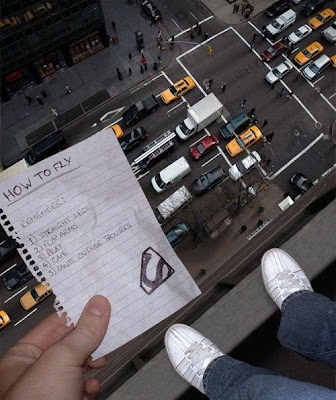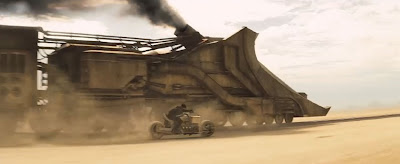By Jon Freach - May 31, 2011 Design Mind
Design can exist without "the research." But if we don't study the world, we don't always know how or what to create.
Recently, my colleague Ben McAllister contributed a piece to this section called "The 'Science' of Good Design: A Dangerous Idea." In it he cautioned against a simplistic view of research as it applies to the design process because it's often synonymous with science—a discipline known for providing "hard truths" about the world. This leads people to believe (sometimes falsely) that "the research" will do the same for business. I am a researcher and a designer, and his article does raise a worthwhile question: "What is research good for, and how can we use it for the purpose of design?"
Designers thrive when they have a working concept of what makes people tick, a context that allows them to shape their ideas by considering what people covet and use, and somewhere to focus all their creative energy. Research can provide the fuel for new ideas. To Ben's point, design research isn't a scientific endeavor aimed at finding truths. Our clients typically can't afford the large sample sets and extended time frames necessary for such a "scientific" process.
And sometimes design teams don't have the patience to see the value in dragging out a study in an effort to make it scientifically or statistically significant. We're just not wired that way; we prefer to make and experiment and then analyze later. So what is research good for?
1. Learning about people's behavior
Behavior is fertile ground for design. Not just human behavior, but systems behavior: social, technical, environmental, political, and economic systems. Increasingly, we are faced with ill-defined problems that are related to the workings of entire systems. Long gone are isolated problems (and opportunities).
Understanding behavior gives designers at least two important kinds of insight. First, it provides a sense of action in the world, which can lead to empathy. For example, how does a patient go about finding his or her way to the radiology lab at a hospital for a first cancer treatment, and what is that way-finding experience like? Second, understanding behavior provides some clues about practices and patterns. For instance, many cancer patients at certain clinics memorize their medical record number in order to get treatment, and those numbers can be tied to schedules, appointment locations, and treatment plans.
2. Understanding and analyzing culture
What is culture and why does it matter to designers? Isn't culture kind of a fuzzy concept that is always changing? Yes, and because its elements are so deeply familiar and obvious to us we often don't recognize them as contributing to "culture" at all.
Yet culture is another important system when it comes to understanding design because it deals with the relationships we build between each other, our things, our routines, our view of the the world, and our beliefs. Anthropologist Clifford Geertz defined culture as consisting of "Webs of significance that man himself has spun...and the analysis of it [should] be not an experimental science in search of law, but an interpretive one in search of meaning." Asking simple questions about obvious things can lead to unexpected answers and rich insights.
A designer can reflect on these insights and use them to influence certain nuances in their designs. For example, using the metadata associated with a cancer patient's medical record number, such as appointments, schedules, maps, and customized directions of the hospital, adds meaning to a simple and common interaction at a hospital—getting directions. Placing a pathway on the ground to follow enables those same patients, who might often be self-conscious of their bald heads after treatment, to navigate very social environments without having to process the stares of other visitors.
3. Defining context
Context includes the physical and virtual settings that behavior occurs in and that culture shapes and emerges from. Identifying touch points—the decisive moments where a customer and a business intersect—is an important part of defining context. Using our hospital visit example, the designer and the larger design team (including the client if possible) can learn about context by watching the patient go through a process to see what happens, where it happens, and how they cope. By being a participant-observer, or seeing it all in pictures or video "from the field," a designer can gain a first-hand understanding of the real context for his or her work instead of designing from a distance.
4. Setting focus
4. Setting focus
Ill-defined problems, short project schedules, and a lack of patience are common conditions in design, and these can often lead to poor solutions. Doing research demands being comfortable with ambiguity in the early stages of a project in order to attain eventual clarity. This usually occurs through a process of synthesis—cutting the raw data down to size to find patterns and themes. It is this clarity that can enable a designer to focus on the right part of the problem at the right time in the right way. "But what should we focus on?" is one of the most common questions in the business. Even the legendary Charles Eames expressed a similar sentiment when asked about the boundaries of design. He responded, "What are the boundaries of problems?"
Design research is not "a science" and is not necessarily "scientific." It gives designers and clients a much more nuanced understanding of the people for whom they design while providing knowledge that addresses some of the most fundamental questions we face throughout the process. What is the correct product or service to design? What characteristics should it have, and is it working as intended? "The research" won't necessarily provide cold hard answers. But it will generate some good and feasible ideas.












































